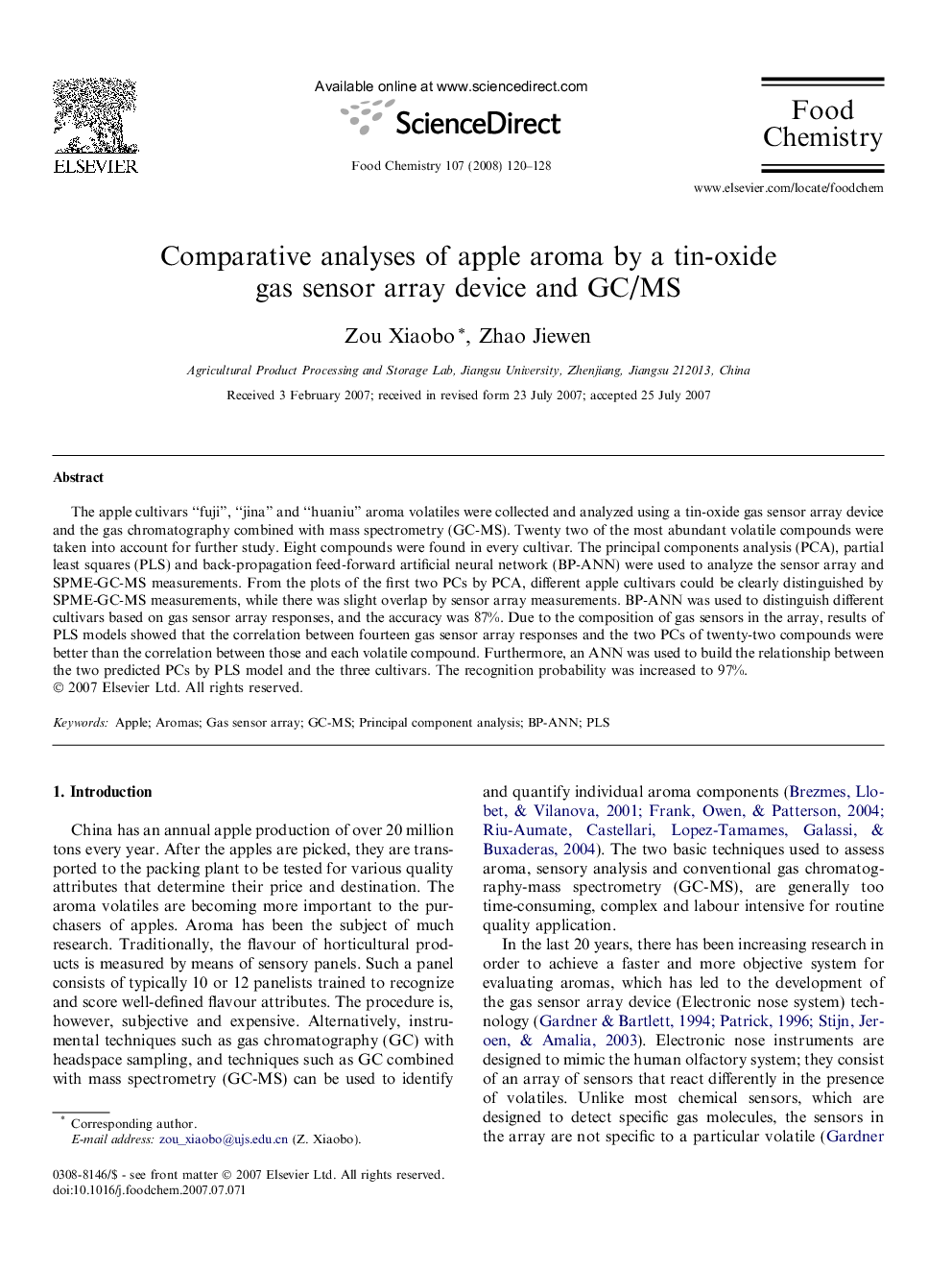| Article ID | Journal | Published Year | Pages | File Type |
|---|---|---|---|---|
| 1189234 | Food Chemistry | 2008 | 9 Pages |
The apple cultivars “fuji”, “jina” and “huaniu” aroma volatiles were collected and analyzed using a tin-oxide gas sensor array device and the gas chromatography combined with mass spectrometry (GC-MS). Twenty two of the most abundant volatile compounds were taken into account for further study. Eight compounds were found in every cultivar. The principal components analysis (PCA), partial least squares (PLS) and back-propagation feed-forward artificial neural network (BP-ANN) were used to analyze the sensor array and SPME-GC-MS measurements. From the plots of the first two PCs by PCA, different apple cultivars could be clearly distinguished by SPME-GC-MS measurements, while there was slight overlap by sensor array measurements. BP-ANN was used to distinguish different cultivars based on gas sensor array responses, and the accuracy was 87%. Due to the composition of gas sensors in the array, results of PLS models showed that the correlation between fourteen gas sensor array responses and the two PCs of twenty-two compounds were better than the correlation between those and each volatile compound. Furthermore, an ANN was used to build the relationship between the two predicted PCs by PLS model and the three cultivars. The recognition probability was increased to 97%.
